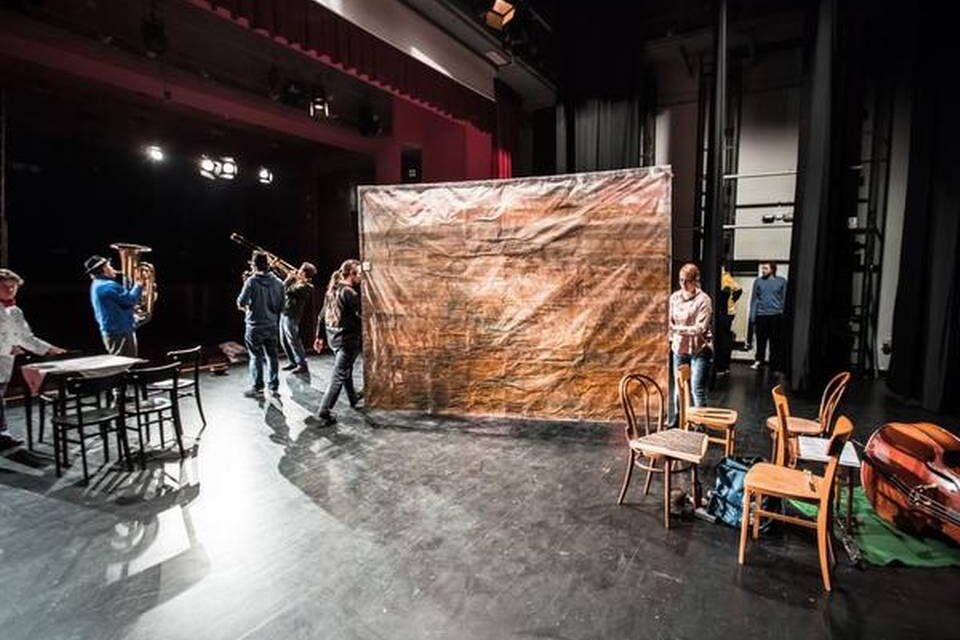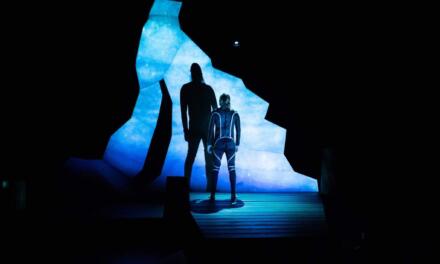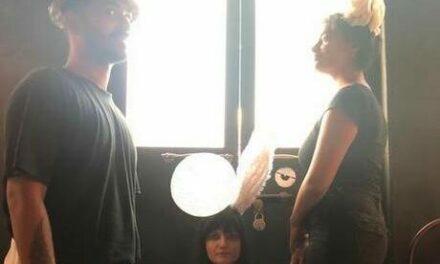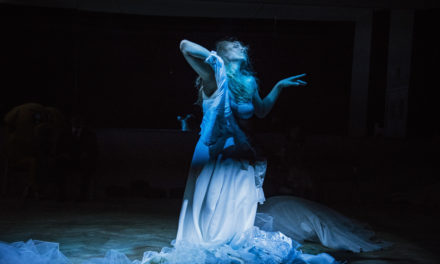For ensemble pieces in theatre, where actors never once leave the stage, what becomes all-important are the transitions between scenes — how the action, settings and mood segue in transforming ways from one set-piece to the next. But often, even in projects with an extended period of rehearsals, transitions are sometimes afterthoughts put into place much closer to show-dates than might be considered desirable by an anxious stage manager. There have been cases when actors have been thrown in at the deep end, to figure their own way from one scene to the next, and they’ve, of course, been up to the task.
Fleeting, integral moments
Is a transition pure mechanics or does it involve some craft on the part of the actor? When doubling up as an almost impromptu stagehand, an actor must display precision and timing and an ability to become part of the furniture while also staying alive as a character or simply a figure in the backdrop still cloaked in meaning. Swept away or brought in, props are in essence the artificial crutches (although some have enterprisingly described them as co-actors) that help actors slip into the characters they play. But multi-tasking as a functioning extra when still mulling over a character’s motivations is a tough ask at times especially to those who might want to lose themselves in a performance, arriving at the truth by escaping the veneer of an ‘acting’ performer. It often seems like too much effort for a transition that might last all of sixteen counts. Which is why we have production assistants and fade-outs in most standard-issue theatre productions.
However, fade-outs in theatre have now begun to be considered with a degree of suspicion. Things that go bump in the dark, furtive figures stumbling about, glow-tape conspicuously outlining just about anything, or simply a rupture to on-stage proceedings just when the drama was beginning to get engaging. Audiences increasingly expect both immersion and seamlessness in order to be lulled into a satisfying theatre-going experience, shorn of brass tacks and backstage intrigues. Whether they are entitled to this premeditated suspension of disbelief is another question, but usually the “bums on seats” model of functioning affects the way we create our theatre much more (insidiously or otherwise) than we might care to admit.
Fine-tuning performances
But, there is something to be said about actors’ labor and processes being visible on stage. Often, we don’t notice actors ‘working’ because we have bought in spectacularly into the world they have created for us with just the snap of their fingers, in a manner of speaking. The effortlessness of ‘being’ makes us believe that their presence on stage is almost facile, which it is anything but, because even actors who do not achieve any kind of virtuosity on stage put in the labor. Blood-letting comes with the turf. Actors are like sportspeople, in reality, they are emotional athletes who traverse lifetimes in what might be a play’s limited running time. Audiences ride along for the journey, and sometimes a performance might take an emotional toll on them, but never a physical toll. Which is why watching theatre is as vicarious an activity as any other. Which is why watching actors limber up before a show is a performative event in itself, and even a privilege, much like how the tuning of the musical instruments that comprise an orchestra takes place in full view. Those discordant beginnings are as important a part of the concert-going experience as the opening credits of a movie – we feel cheated if the opening frames jump straight into the action. Yet, we have been partial to curtains drawn shut and darkened auditorium, because the ‘start line’ of a play is still sacrosanct, and its sanctity must be preserved. And once it has been crossed, it is the tranquility of live performance that carries us across. And yes, transitions contribute as many moments to savor as heavy-duty scenes.
This article was originally posted at TheHindu.com on March 6, 2020, and has been reposted with permission. To read the original article, click here.
This post was written by the author in their personal capacity.The opinions expressed in this article are the author’s own and do not reflect the view of The Theatre Times, their staff or collaborators.
This post was written by Vikram Phukan.
The views expressed here belong to the author and do not necessarily reflect our views and opinions.


















